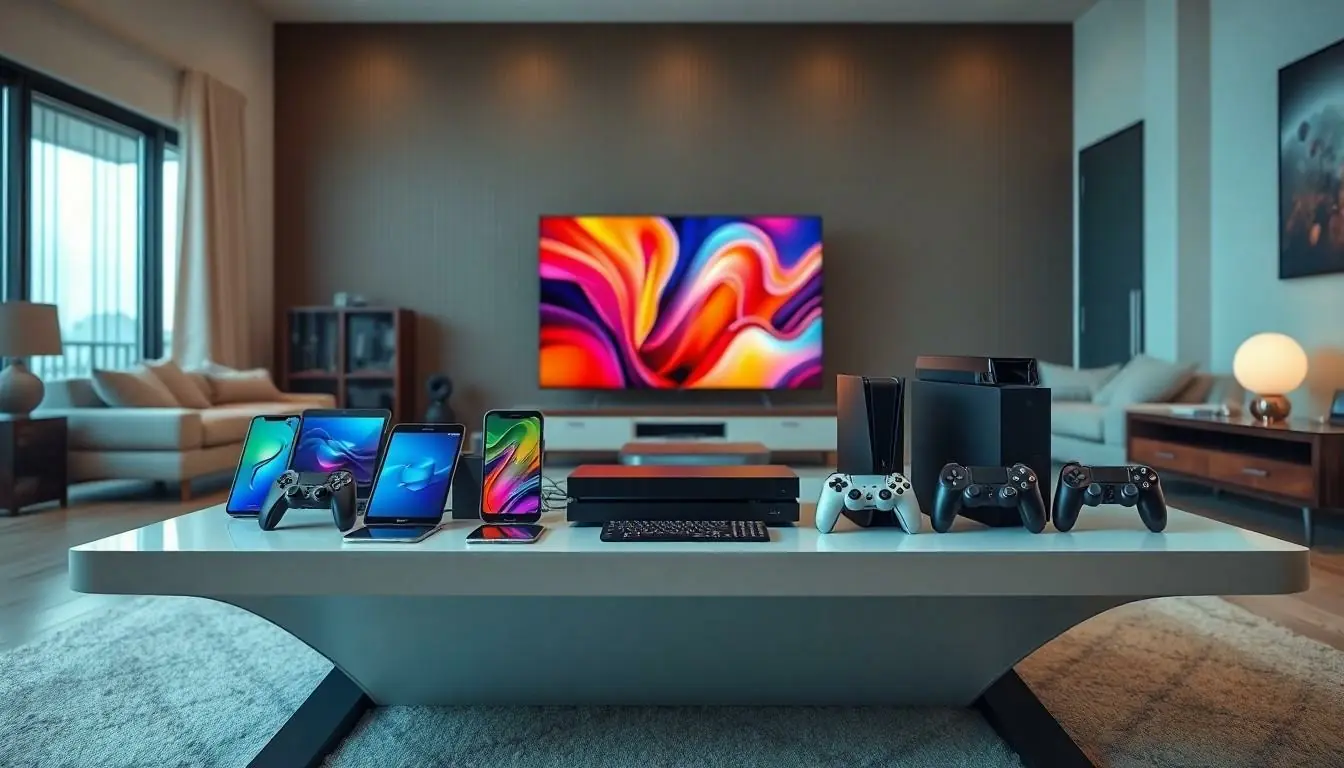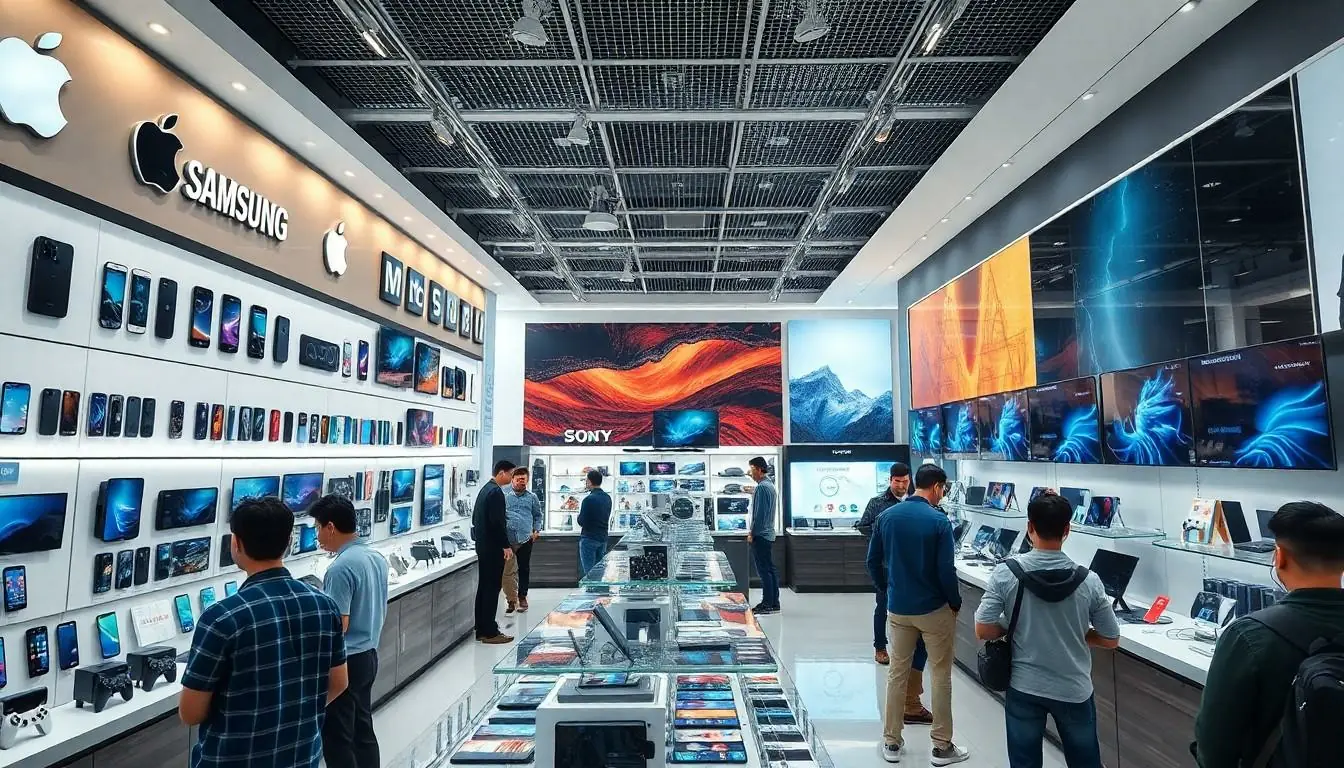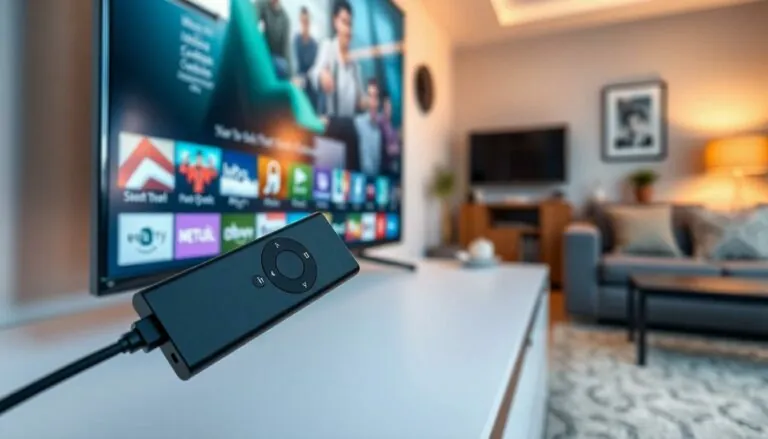In a world where gadgets rule our lives and smartphones are practically extensions of our arms, consumer electronics manufacturers are the unsung heroes behind the scenes. They’re the wizards crafting the devices that keep us connected, entertained, and occasionally confused when the latest update changes everything overnight. From sleek laptops to smart home devices that know when to dim the lights (and when to judge your binge-watching habits), these manufacturers are at the forefront of innovation.
But let’s face it, navigating this tech jungle can feel like trying to assemble IKEA furniture without instructions. With so many players in the game, it’s crucial to understand who’s who in the world of consumer electronics. Get ready to dive into the fascinating universe of these manufacturers, where cutting-edge technology meets a dash of humor and a whole lot of creativity.
Table of Contents
ToggleOverview of Consumer Electronics Manufacturers
Consumer electronics manufacturers design and produce a wide range of products used daily, from smartphones to televisions. These companies significantly impact technological advancements, often leading the charge in innovation. Major players like Apple, Samsung, and Sony focus on developing devices that enhance user experience and connectivity.
Established companies dominate the market, commanding a significant share. According to Statista, in 2021, Apple led with a global market share of around 15% in the smartphone sector. Samsung closely followed, holding approximately 13%. Such statistics underline the competitive landscape manufacturers navigate.
Emerging manufacturers also play a vital role in the industry. Companies like Xiaomi and OnePlus introduce cost-effective alternatives, attracting budget-conscious consumers. These brands often leverage online marketing strategies to gain visibility and connect directly with customers.
Collaboration defines the industry. Manufacturers frequently partner with software developers and component suppliers to create more integrated products. For example, Qualcomm provides processors that power many leading smartphones, showcasing the interconnectedness of the technology ecosystem.
Challenges persist in the consumer electronics sector. Supply chain issues, fluctuating component prices, and evolving consumer preferences require manufacturers to adapt swiftly. These challenges highlight the necessity for innovation and efficient production processes in maintaining competitive advantages.
Sustainability also emerges as a priority for many manufacturers. Efforts to reduce electronic waste and improve energy efficiency align with consumer demand for eco-friendly practices. Brands adopting sustainable initiatives often resonate more with environmentally conscious consumers, driving sales and loyalty.
Key Players in the Industry


Consumer electronics manufacturers shape the technology landscape through innovation and market presence. Major brands dominate this sector while new contenders challenge their status.
Major Brands and Their Market Share
Apple, Samsung, and Sony consistently lead the consumer electronics market. With a notable 15% share of the smartphone sector as of 2021, Apple exemplifies strong brand loyalty. Samsung closely follows with its extensive product lineup, including smartphones, televisions, and appliances. Sony maintains a solid position through its high-quality televisions and gaming consoles. Together, these brands establish industry standards and set trends. Their market influence demonstrates a competitive environment where consumer preferences strongly dictate success.
Emerging Contenders
Xiaomi and OnePlus represent significant players in the consumer electronics landscape. With competitive pricing, Xiaomi captures budget-conscious consumers looking for quality devices. OnePlus also gains traction by appealing to tech enthusiasts who seek premium features without premium prices. Online marketing strategies enhance these brands’ visibility, allowing for rapid growth. These emerging contenders challenge established giants, often pushing innovation and driving market changes. Their presence leads to a more diverse selection for consumers, allowing for greater choices and opportunities.
Trends Shaping the Industry
Consumer electronics manufacturers adapt to trends that continually reshape their strategies and offerings. Innovations in technology and sustainability practices play pivotal roles in this dynamic environment.
Innovations in Technology
Advancements drive the consumer electronics sector forward. Manufacturers invest heavily in research and development, aiming to create products with enhanced functionality. Artificial intelligence integration improves user experiences, allowing devices to learn and adapt to individual preferences. Increased focus on 5G technology sets the stage for faster connectivity, enhancing mobile devices’ performance. The rise of smart home devices illustrates the growing demand for interconnected ecosystems. Brands like Apple and Samsung consistently lead in innovation, introducing cutting-edge features that attract consumers.
Sustainability Practices
Sustainability practices gain importance as consumers demand eco-friendly products. Manufacturers adopt recycling initiatives to minimize waste and promote circular economies. Use of sustainable materials improves product designs, reducing environmental impact. Many companies commit to carbon neutrality, showcasing their dedication to environmental responsibility. Eco-labeling helps consumers identify greener options, influencing purchasing decisions. Industry giants, including Sony, implement robust sustainability policies to strengthen brand loyalty and appeal to environmentally conscious buyers.
Challenges Faced by Manufacturers
Manufacturers in the consumer electronics sector face significant challenges that can impact their operations and product offerings.
Supply Chain Issues
Supply chain disruptions pose a major challenge for manufacturers. They often deal with fluctuating component prices, which affect production costs. Delays in shipping and logistics also lead to extended lead times for product launches. As a result, many manufacturers must adapt quickly to changes in the market, securing alternative suppliers and optimizing inventory levels. This situation forces companies to prioritize efficiency to maintain profitability and meet consumer demand. For example, semiconductor shortages have affected production schedules across the industry.
Competition and Market Saturation
Competition within the consumer electronics market is intensifying. Major players like Apple and Samsung face pressure from emerging brands such as Xiaomi and OnePlus that offer innovative, budget-friendly alternatives. Market saturation contributes to this dynamic, as consumers have many options for similar devices. Differentiation becomes essential for manufacturers to capture market share. They need to invest in unique features and cutting-edge technologies to stand out. The constant innovation cycle keeps the market vibrant but creates pressure to evolve rapidly and meet changing consumer expectations.
Future Outlook for Consumer Electronics Manufacturers
Emerging technologies play a central role in shaping the future outlook for consumer electronics manufacturers. Trends like artificial intelligence and 5G technology promise to significantly enhance product functionality. Connected devices, especially in smart homes, are becoming essential, with brands such as Apple and Samsung at the forefront of innovation in this area.
Sustainability is increasingly important, with more consumers seeking eco-friendly products. Manufacturers respond by adopting recycling initiatives and utilizing sustainable materials. Many brands now commit to carbon neutrality, which not only minimizes environmental impact but fosters loyalty among eco-conscious buyers.
Competition is intensifying as established brands face pressure from budget-friendly entrants. Differentiation remains key for capturing market share, pushing manufacturers to innovate continuously. Partnerships with software developers and component suppliers will continue to be pivotal, as illustrated by Qualcomm’s integration into many smartphones.
Market challenges persist, notably regarding supply chain disruptions. Semiconductor shortages have forced manufacturers to adapt swiftly, emphasizing the need for efficiency and alternate supplier relationships. Long lead times can affect product launch strategies, and manufacturers must prioritize meeting consumer demand while maintaining profitability.
Consumer preferences are evolving, driving the demand for enhanced interconnected experiences. The growth of wearable technology presents new opportunities for manufacturers to integrate health and fitness tracking into everyday devices. As the market continues to shift, companies that embrace these trends and adapt their strategies effectively will likely thrive in an increasingly competitive landscape.





